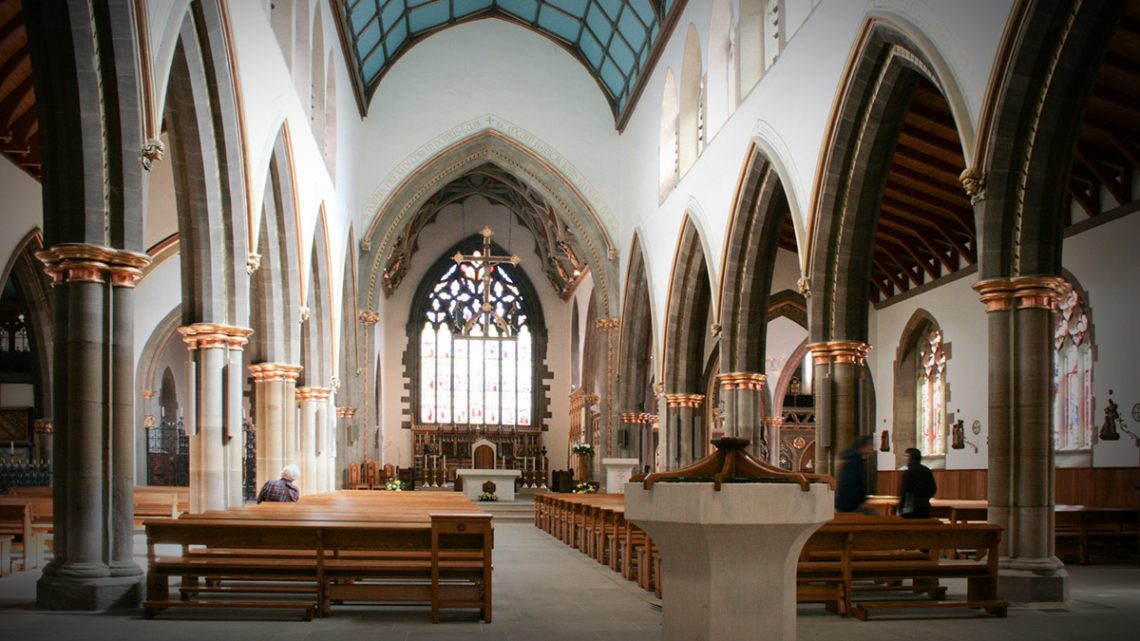St Marie’s opened in 1850, at the same time that Catholic dioceses and parishes were re-established for the first time since the Reformation.

Catholics worshipped in the medieval parish church of St Peter and St Paul until the Protestant Reformation in 1559, after which Priests were hunted down, imprisoned and many Catholics suffered martyrdom. Mass continued to be celebrated in a few houses of the gentry, including in a hidden chapel in the roof of a house in Fargate belonging to the Duke of Norfolk – where the Next shop now stands.
By 1814, Catholics were allowed to build modest churches, provided they were set back from the roadside. Sheffield Catholics bought the ageing Lord’s House in Fargate and built a small chapel in its back garden – between the present Cathedral’s Mortuary and Blessed Sacrament chapels. By 1846 the chapel was too small and the Priest, Fr Pratt, decided to build a new church. Leading local architect M E Hadfield designed the present church, which is based on a 14th century church at Heckington, in Lincolnshire and was built and decorated with the aid of generous donations by the Duke of Norfolk, his mother and parishioners.
Fr Pratt died, aged 38, while the church was being built and was buried at St Bede’s in Rotherham. However, the stonemason building St Marie’s had often heard Fr Pratt say that he would like to be buried in his church, so he secretly dug up Fr Pratt’s coffin and reburied him in a tomb near the altar, where his body still lies, although his effigy has been moved to beneath the altar in the Mortuary chapel. St Marie’s opened in 1850, at the same time that Catholic dioceses and parishes were re-established for the first time since the Reformation. The church cost £10,562 12s 2d to build – a huge sum in those days – and was consecrated after the debt had been paid off in 1889.
Sheffield escaped much damage during the First World War, but during the Second World War a bomb blew out stained glass windows in the Blessed Sacrament chapel. The remaining stained glass windows were then removed and stored in a mine shaft at Nunnery Colliery. When the mine flooded, during the War, the glass was covered in mud and the drawings for recreating the windows were destroyed, but in 1947, the glass was retrieved and replaced in the windows. In 1970, re-ordering of St Marie’s for the reformed liturgy of Vatican II began. Much dark woodwork was removed, new lighting and benches were installed and in 1972, a new altar facing the people was consecrated by Bishop Moverley, auxiliary Bishop of Leeds.
On the 30 May 1980, the new diocese of Hallam was created with St Marie’s as its Cathedral Church.